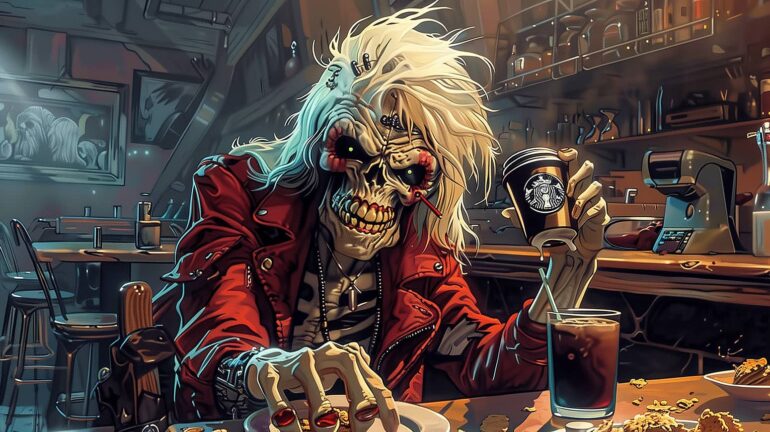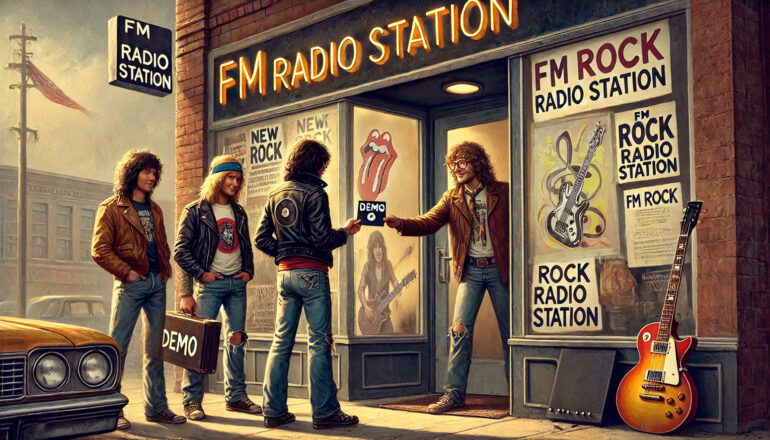We Tune You Up
Listeners:
Top listeners:
00:00
00:00
chevron_left
-
 play_arrow
play_arrow
WTYU.rocks We Tune You Up
Why Every Band Needs a Roadmap for Creative Collaboration
Kevin McElroy
Editor, Tune Up Magazine
When it comes to many things, design being one of them, I believe there’s really nothing new under the sun—maybe you feel the same way about music? As an outsider looking in, I admire the language you musicians share. It’s like a code. You see a bandmate’s key change and instantly know when to adjust. Drummers sense where the singer is, even if they’re struggling to hear. This shorthand comes from practice, trust, and mastery. Every discipline has its own version, from music to art to design.
But when you step out of your creative comfort zone—say, when a musician needs to communicate with a graphic artist, copywriter, or marketer—that shorthand can fall apart fast. Sure, a good designer can guide the conversation, but why leave so much to guesswork? That’s where a Creative Brief comes in.
“A creative brief aligns creative vision, sets clear expectations, and elevates collaboration from subjective opinion to productive dialogue.”
So, What’s a Creative Brief?
Simply put, it’s a document that outlines your goals, target audience, messaging, and overall vibe. Think of it as a roadmap. Without one, everyone’s just wandering around, hoping to end up in the same place. With one, you know exactly where you’re going—and how to judge whether you’ve arrived.
Take, for example, the legendary collaboration between Mick Jagger and Andy Warhol on the Sticky Fingers album cover. Jagger’s brief to Warhol was brief—but impactful. He wrote:
“In my short sweet experience, the more complicated the format of the album, e.g., more complex than pages or fold-out, the more fucked up the reproduction and agonising the delays. But having said that, I leave it to your capable hands.”
Jagger knew exactly who he was dealing with. Warhol was already a pop art legend. The Rolling Stones could afford to let him run wild, knowing whatever came back would make waves.
“Jagger trusted Warhol to create freely. That’s rare. Most of us aren’t ready to hand over a blank check to a notorious pop artist without questions.”
But let’s be real: most bands don’t have an Andy Warhol on speed dial. For everyone else, a Creative Brief makes sure everyone is aligned from the start.
Why Does This Matter?
Without a brief, everything stays subjective. The artist is essentially guessing what you want, and your feedback can be just as random. “I like it.” “I hate it.” Neither helps. You need a way to judge whether the design fits your sound, message, and audience.
Ask yourself: Is your audience mostly male or female? What imagery fits your genre? What influences do you want to spotlight? What message are you sending? If your album art doesn’t match your sound, it’s a wasted opportunity. If you’re building a brand, like Iron Maiden’s Eddie, communicate that. A Creative Brief gets all of this on the table upfront.
“Without direction, all you get is a guessing game. Give your creative team a map, and they’ll take you to places worth visiting.”
Benefits for Both Sides
A strong brief gives the artist a place to start. It narrows their focus but also gives them freedom to explore within clear boundaries. Most importantly, it gives them confidence. When I know I’ve followed a brief, I can defend my choices. Now, both sides can have a productive conversation about refining the direction, not starting from scratch. Remember the designer’s mantra: Good, Fast, or Cheap—Pick Two. Respecting the process makes it work.
And here’s a key point: A brief gives everyone involved the opportunity to weigh in and commit upfront. This is especially important when projects are run by committee—which, let’s face it, happens more often than not. Bands tend to operate democratically, but designers often work solo. A brief ensures every band member has their say before the designer even begins. It streamlines communication and eliminates the confusion of juggling conflicting opinions.
A smart designer will insist on a “sign-off” on the brief. This isn’t just for their protection—it’s for yours too. It means that when it’s time to present the final design, everyone’s working from the same set of expectations. The designer can present their work with confidence, and if there’s any debate among band members, it’s rooted in the agreed-upon direction. No one’s flying blind.
“The brief is your armor. It protects your project from endless revisions, conflicting opinions, and wasted time.”
The brief also boosts efficiency. It acts as a litmus test throughout the project, helping everyone determine whether adjustments are needed in the brief itself or the artist’s execution. Instead of endless back-and-forth that drains time and energy, the team can ask: Is this design missing the mark because of the brief, or does the artist need to refine their approach? This clarity keeps the process moving forward and avoids unnecessary delays.
“A clear brief helps you avoid wasted effort, ensuring the project evolves from alignment—not endless corrections.”
A Better Conversation
Creative briefs don’t just help artists—they help you too. Clear direction means your feedback is useful and specific. Instead of saying, “This sucks,” you can say, “This doesn’t fit our dark, moody vibe.” Now, you’re having a real conversation. Sure, you might be naturally good at expressing your vision—but why risk confusion?
And respect the artist’s effort. Pat Monahan from Train faced this in the studio. Some folks didn’t like one of his lyric lines. He asked for suggestions. They had none. His response? “Ok, I’ll keep singing my line until you have something better.” He’d done the work. He’d considered the options. When an artist invests time and thought, respect that.
“Offer input when the page is blank. Don’t wait until the work is done to raise objections.”
If an artist doesn’t want to go through the process, that’s a red flag. No one knows your music, image, and message better than you. Use a brief to make sure the world gets the right picture.
Kevin McElroy is an experienced marketing strategist with decades of helping brands, and businesses refine their identity and communicate more effectively. For more insights on branding and creative direction, visit mcelroycreativemedia.com.
Written by: Tune Up Webmaster
Album Art Andy Warhol band artwork band branding band identity band marketing clear communication creative briefs creative collaboration creative direction creative efficiency creative judgment creative process design process design tips Eddie mascot Iron Maiden marketing strategy Mick Jagger music design Music Industry Music Marketing Sticky Fingers
Rate it
Similar posts
Recent Comments
No comments to show.Featured post
Latest posts
Current show

Metal For Breakfast
Hosted by Knuckles
"Metal for Breakfast" is a hard-hitting morning show that serves up heavy riffs and epic anthems to kickstart the day. Fueled by classic and contemporary metal tracks, this show wakes up listeners with a sonic blast that goes well beyond the usual coffee routine. Each episode brings a mix of legendary metal tunes and hidden gems, making it the perfect morning ritual for those who want to start their day on a high-voltage note. Grab your air guitar, turn up the volume, and get ready to rock your way into the day with "Metal for Breakfast."
closeUpcoming shows

Midday with KK
Hosted by KK Law
10:00 am - 2:00 pm
Flashback Café
Hosted by KK Law
12:00 pm - 1:00 pm
WTYU Afternoons
2:00 pm - 7:00 pm

WTYU Nights
11:00 pm - 12:00 am

Metal For Breakfast
Hosted by Knuckles
6:00 am - 10:00 amChart
Tune Up Magazine LISTEN TO WTYU NOW



















Post comments (0)